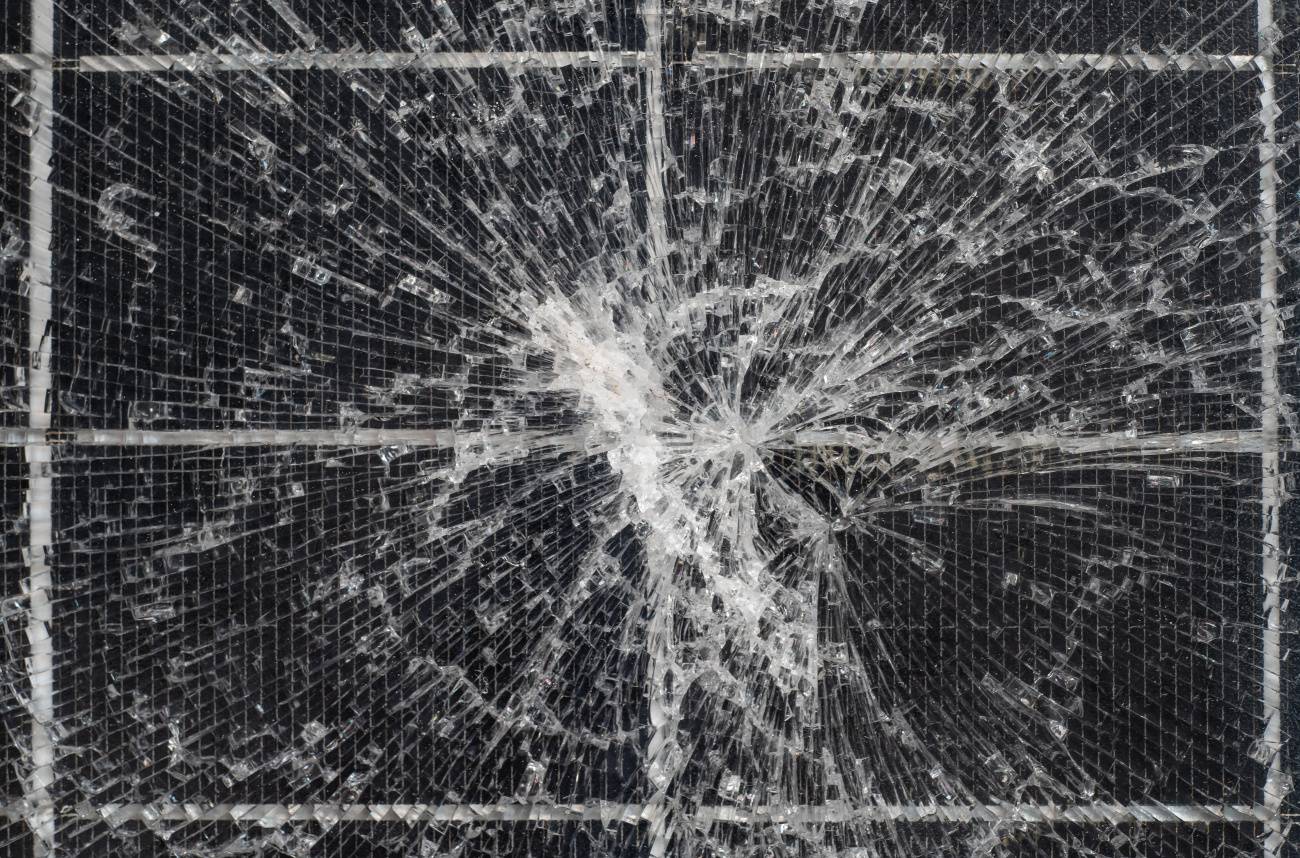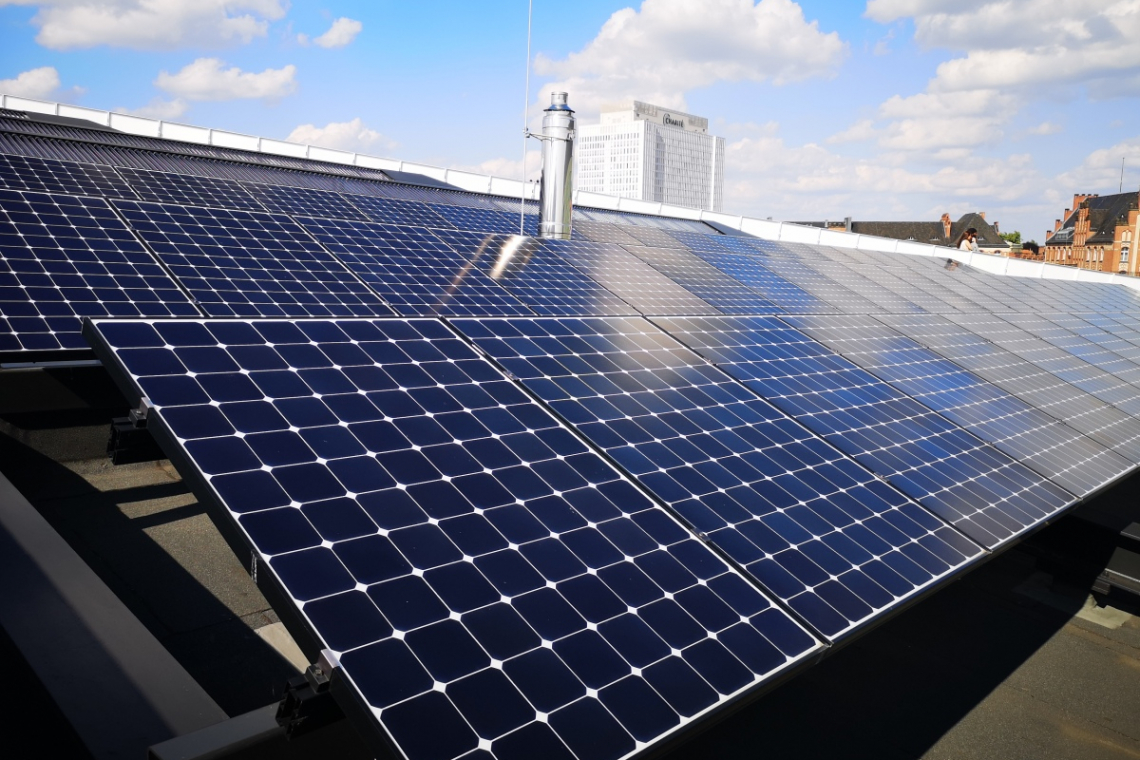Despite the growing quantities of old solar modules, which tie up considerable amounts of important raw materials, no recycling process for decommissioned photovoltaics has yet been able to establish itself. The main reasons for this are high costs and technical challenges. In the study 'End Of Life Management Of Solar Panels' [1], Egyptian scientists have now proposed a new construction method for repairable modules that could partially solve these problems.
Despite the growing number of old solar modules, which bind significant amounts of important raw materials, no recycling process for end of life photovoltaics has yet been established. The main reasons are high costs and technical challenges. In the study 'End Of Life Management Of Solar Panels' [1], Egyptian scientists have now proposed a new design for repairable modules that could at least partially solve these problems.
In addition to land consumption, the energy transition and the growing use of photovoltaics (PV) worldwide have revealed another ecological and economically questionable downside: Around three decades after PV technology entered the mass market, numerous solar modules are now reaching their 'end of life' year after year. Market researchers at Rystad Energy [2] assume that around 27 million tons of solar module waste will be generated worldwide every year from 2040 onwards. Some of the reasons for these piling mountains of PV waste: repairing individual cells is considered impractical, and despite numerous laboratory tests, the recycling of such discarded modules has remained an exception to this day. In most cases, old modules are simply shredded in special shredders. This binds silicon, aluminum, rare earths and other valuable materials worldwide and also burdens the waste balance.
 The yield of solar modules, here an example image from the Futurium in Berlin, decreases over time - repairable modules would open up completely new perspectives for long-term use
The yield of solar modules, here an example image from the Futurium in Berlin, decreases over time - repairable modules would open up completely new perspectives for long-term use
Disposal technologies fraught with numerous problems
"The treatment and disposal technologies used for end-of-life solar modules are fraught with numerous problems," argue E. El-Fayome, A. EL-Shazly, Mohamed A. Abdelhamed, M. Abouelatta-Ebrahim and Abdelhalim Abdelnaby Zekry from Ain Shams University Cairo, El-Shorouk Academy and El Gezira Higher Institute Cairo in their study. "The shredding process leads to noise pollution, dangerous gas emissions and enormous amounts of dust, including glass fibers and glue."
A typical crystalline silicon PV module is composed of an aluminum frame, tempered glass for environmental protection, ethylene-vinyl acetate co-polymers (EVA) [3], a Tedlar polyester Tedlar (TPT) back sheet, SiO2 silica gel and the elements silicon, selenium, cadmium, gallium, tellurium, indium as functional materials, as well as junction boxes, housing bodies, cables and connectors, usually made of copper or plastic. According to earlier studies, the weight distribution is as follows: 54.7 % glass, 12.7 % aluminum, 10 % sealing adhesive, 3.1 % silicon and 19.5 % other materials [4]. Recovering these strongly interconnected materials at the 'end of life' (EoL) of the solar module has proven to be a technologically feasible but economically difficult challenge. In principle, solar modules can be separated by heat treatment, artificial dismantling or organic solvents. Reusable plastics, aluminum, glass and silicon can be recycled using chemical and physical processes.
The first step is to separate the individual components. The anti-reflective film, for example, can be melted and removed after ten days of immersion in trichloroethylene at 80 ºC in order to recover the silicon plate in the module. In general, there is a trend towards heat-assisted and chemical separation. The crystalline silicon is treated in three steps: First, the Al electrodes on the back of the plates are removed with a sodium hydroxide solution. Then a saltpetre solution is used to remove the silver anode grid line. Finally, to recycle the high-purity polysilicon, all anti-reflection reflectors on the silicon surface are removed with a hydrogen fluoride (HF) solution. The silicon, precious metals, rare earths and other element groups are then of particular interest for recycling. Cadmium (Cd) and tellurium (Te), for example, can be separated using ion exchange resins, which act on the metals in a sulphuric acid solution [5]. Copper (Cu) and selenium (Se) can be separated from the cathode plate by oxidation and distillation. There are also processes for the recovery of indium oxygen (InO) and zinc oxide (ZnO) that work satisfactorily on a laboratory scale. However, some of these processes produce liquid organic waste, which poses new disposal problems. Many of the chemicals used are also comparatively expensive [6]. For this reason, only a few solar module manufacturers have so far commissioned large-scale recycling plants. At the time, these included the Solarworld subsidiary 'Deutsche Solar' and some Chinese manufacturers. Widespread industrial use is still pending.
In addition, from an ecological point of view, another option is the preferred solution in any case: if solar modules can be repaired more easily (or at all) in future, their useful life will also be significantly extended. In practice, there are several factors that cause solar modules to lose yield and performance over the years. For example, the anti-reflective coating of colorless EVA applied to the glass degenerates due to the effects of the weather. This in turn reduces the energy yield. Sooner or later, individual solar cells in the modules also fail. This is facilitated by frequent load cycles caused by wind, snow or temperature fluctuations, defects in the contacts, glass breakage, cracks in the solar cells and problems with the diodes [7]. However, these fine-structure defects cannot yet be repaired at a reasonable economic cost: Unless the damage is to external components or contacts, replacing the entire module is the rule.
The new modular design
In order to change this unsatisfactory situation, end-of-life management should be incorporated into the design and production of new solar modules to make them repairable and recyclable, a new study shows. E. El-Fayome, A. EL-Shazly, Mohamed A. Abdelhamed, M. Abouelatta-Ebrahim and Abdelhalim Abdelnaby Zekry from Ain Shams University Cairo, El-Shorouk Academy and El Gezira Higher Institute Cairo propose a new type of structure for solar modules [8]. In addition to the silicon functional layers, these new modules are to consist of the following components: Glass protective cover, a printed circuit board as substrate, also silver, epoxy and tin as adhesives and visible materials, plus solder wires, aluminum and rubber. According to the study, the following process steps must be adhered to:
- Cell sorting: the cells are tested and classified with analogous electrical properties, then a copper strip is glued to the front of all cells.
- Substrate preparation in two main steps. Step 1: Cleaning of the substrate from all impurities that may affect the performance of the solar cells. Step 2: Divide the PCB into equally sized conductive zones with an area approximately half the size of the cells and which are electrically insulated from each other to ensure series connection without short circuits.
- Bonding process: Glue the solar cells to the PCB substrate and extrude 1 g of conductive silver epoxy onto the back of each cell. Within five minutes, carefully place the cell on the substrate at a conductive zone 0.5 cm apart to connect the copper strips of the previous cell to it so that all cells can be connected in series, and leave to cure for one hour.
- Soldering: Solder the other side of the tabbing wire for each cell to the conductive part of the next PCB zone to connect the cells in series.
- Visual inspection: To ensure that the circuit is connected correctly, it is checked visually.
- Assembly: The stack of aluminum frame, rubber sheets, glass, substrate with solar cells and epoxy is assembled.
- Encapsulation: The edges of the surface are cleaned, the output leads are attached, rubber strips are glued to the edges of the substrate with epoxy, and after an hour, the glass and circuit board are joined together in the aluminum frame.
- Final assembly: sealing the edges of the aluminum frame with silicone resin.
Test results: Electrical characteristics similar, yield slightly lower
The authors of the study tested this new module design, compared it with a classic solar module and arrived at these results: In the lighting test, both modules achieved comparable current levels and voltages. However, a subsequent thermal test showed that, depending on the ambient conditions, the operating temperature of the new repairable modules is between 1 and 5.7 Kelvin higher than that of the classic module. This reduces the yield by 0.65 % per Kelvin.
New modules reduce the loss of value in the long term
Nevertheless, according to the authors of the study, the advantages of the new design outweigh the disadvantages: "The main advantage of our module is that it makes it easier to replace damaged or broken solar module components." Another advantage of the proposed module is "that it upgrades existing solar modules and systems to the latest solar cell technology and thus offers new incentives to both private and commercial users as well as installers and other solar energy providers."
References
[1] E. El-Fayome, A. EL-Shazly, Mohamed A. Abdelhamed, M. Abouelatta-Ebrahim and Abdelhalim Abdelnaby Zekry: 'End Of Life Management Of Solar Panels', Conference Paper 40th National Radio Science Conference, May 2023, DOI: 10.1109/NRSC58893.2023.10152958 (accessed: 3.12.2024).
[2] 'Reduce, reuse: Solar PV recycling market to be worth $2.7 billion by 2030', Rystad Energy, https://www.rystadenergy.com/news/reduce-reuse-solar-pv-recycling-market-to-be-worth-2-7-billion-by-2030 (accessed: 3.12.2024).
[3] https://www.rct-online.de/de/RctGlossar/detail/id/28 (accessed: 3.12.2024).
[4] Z. X. Cheng, and X. L. Wang, 'The expatiates of the solar energy photovoltaic cell', Information Recorded Material, 8, pp. 41-47, 2007.
[5] W. Wang and V. Fthenakis, 'Kinetics study on separation of cadmium from tellurium in acidic solution media using ion-exchange resins', Journal of hazardous materials, 125(1-3), pp. 80-88, 2005.
[6] R. A. Sasala, J. Bohland and K. Smigielski, 'Physical and chemical pathways for economic recycling of cadmium telluride thin-film photovoltaic modules', Conference Record of the Twenty Fifth IEEE Photovoltaic Specialists Conference, pp. 865-868. IEEE, May, 1996.
[7] A. El-Shazly, A. Zekry, M. El-Koosy and M. Farid, 'Three flat plates terrestrial (3FPT) module fabrication and testing', Renewable energy, 23(3-4), pp.509-523, 2001.
[8] E. El-Fayome, A. EL-Shazly, Mohamed A. Abdelhamed, M. Abouelatta-Ebrahim and Abdelhalim Abdelnaby Zekry, 'End Of Life Management Of Solar Panels', Conference Paper 40th National Radio Science Conference, May 2023, DOI: 10.1109/NRSC58893.2023.10152958 (Retrieved: 3.12.2024).


